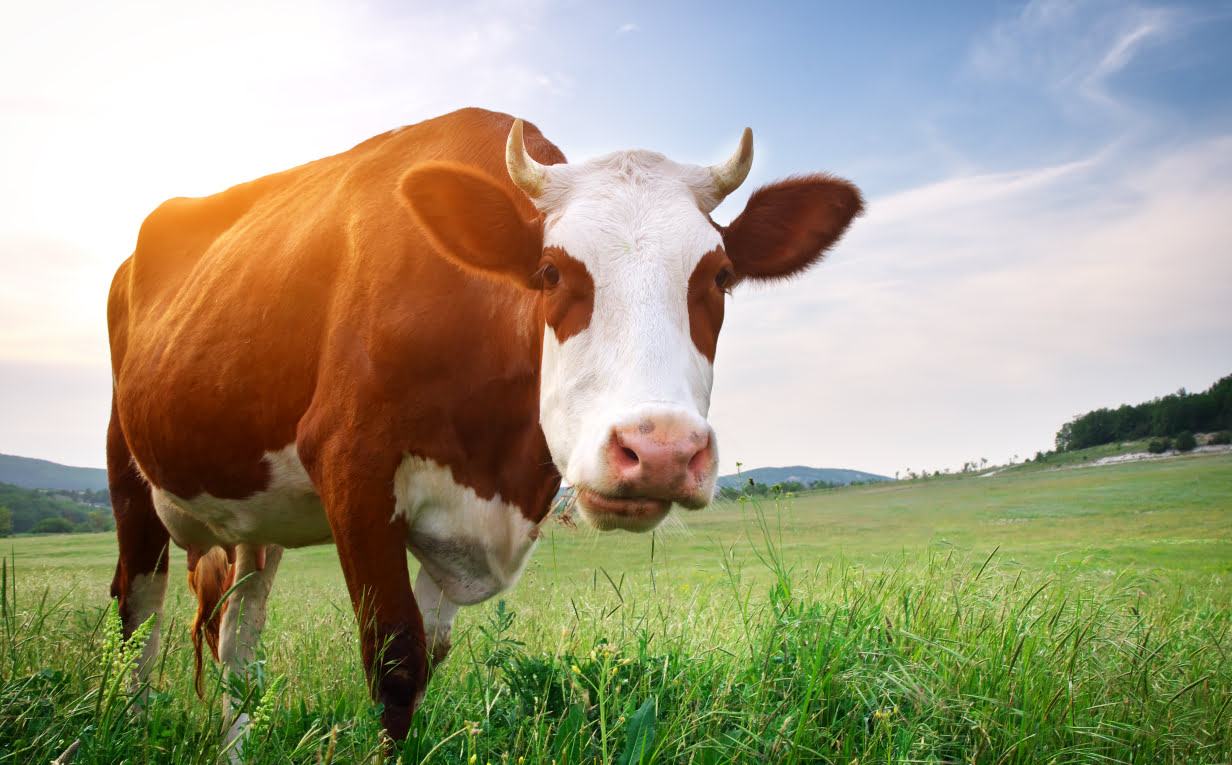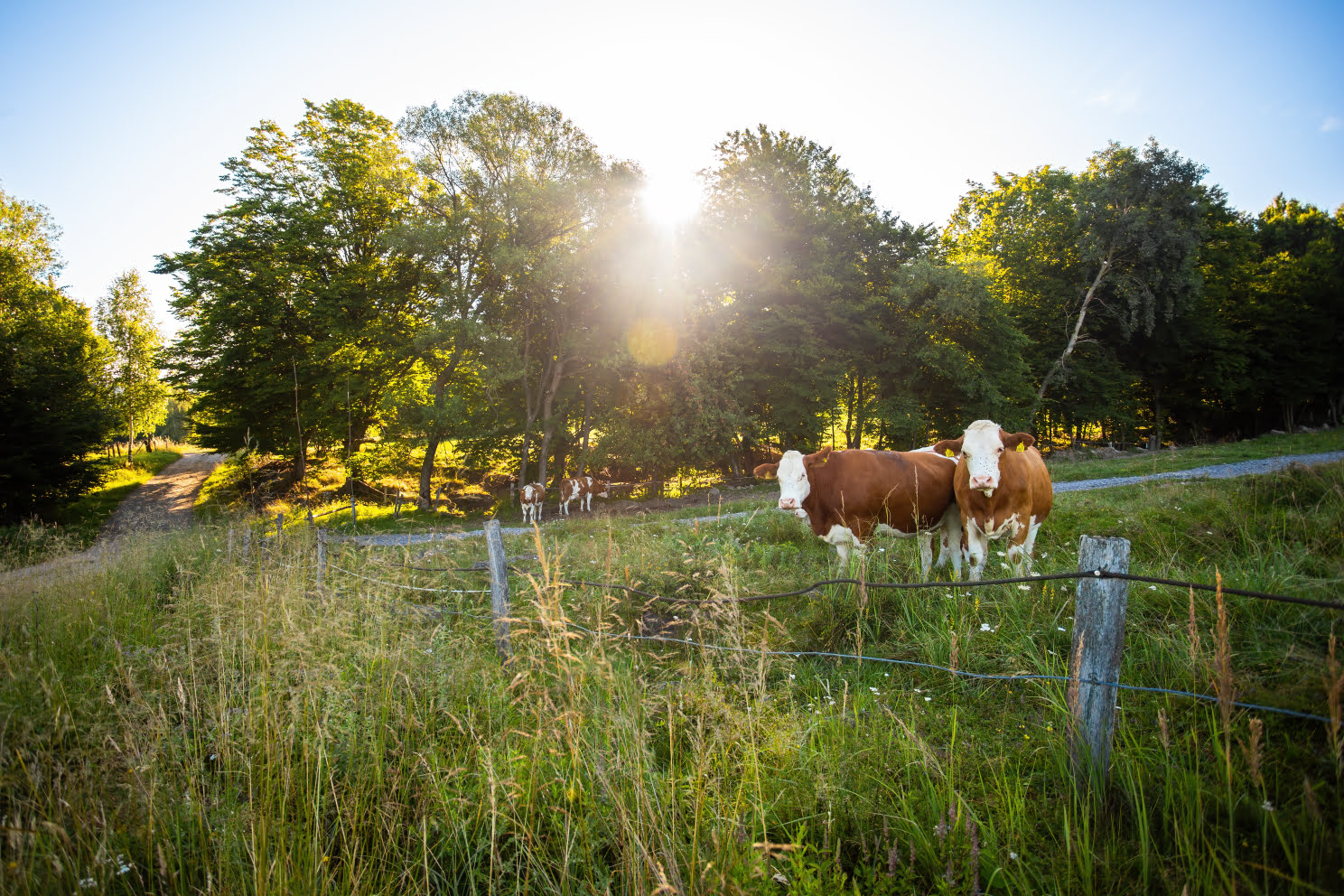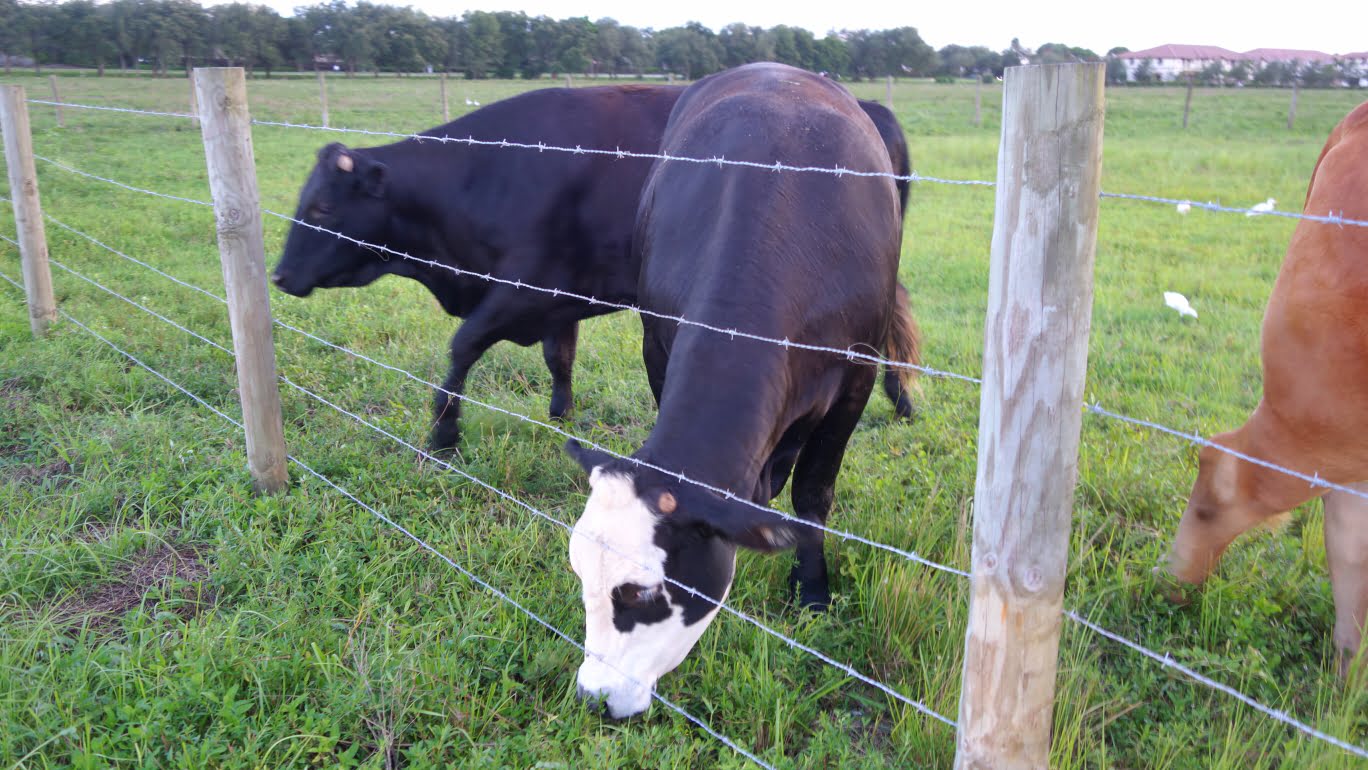Successful farmers use grazing systems to improve the productivity of their pastures. This in turn helps them improve animal and pasture health.
In this article, let's talk about three different grazing strategies, and how herbage-data based rotational grazing can help you improve production.
Let's begin with the three grazing systems.
1. Continuous Grazing System:
In continuous grazing systems, cattle graze a pasture continuously, over a period of time. In this system, the pasture doesn't get any rest period.
The key advantages of continuous grazing systems are:
- no record keeping needed
- no fencing or paddock setup costs
- no active management of pastures required
However, these advantages come at a steep price. The key disadvantages of continuous grazing systems include:
- low pasture yields
- low nutritional value
- degrading pasture quality
- and poor animal health outcomes
That said, a continuous grazing system may work well for farms that have a lot of grazing area compared to a small herd size. It also may work well for small scale hobby farms with a larger ratio of dry cows.
However, if you rear dairy cows that need high quality forage and you're objectives are to increase production as well as profits, then this might not be the best system for your needs.

2. Sequential Rotational Grazing System
In this system, the grazing area is divided into roughly equal sized paddocks, and livestock animals are rotated between each paddock in a set sequence, after a set period of time.
So, when the last paddock of the sequence has been grazed, the first paddock that has been given a good amount of time to rest, is grazed next.
This rest period allows the pasture to:
- recover from the grazing event and
- to grow enough to withstand the next grazing event.
Sequential rotational grazing systems allow:
- high pasture yields
- high stocking densities
- and better pasture quality
However, it also requires more upfront investments to create fenced paddock areas with access to water supply.
Rotational grazing practices are in general more fruitful for farms in high rainfall regions with access to irrigation facilties.

3. Herbage-based Rotational Grazing System
In this system, paddocks are rotated based on it's herbage growth rate, and not in a set sequence. Because, each paddock has different regrowth rates, based on it's soil fertility, slope, irrigation and drainage.
This offers several advantages that include higher yields, stocking densities, nutrition intakes and quality pastures. Let's explore each of these advantages in more detail.
However, sequential rotational grazing doesn't take into account variables such as weather, fertility and soil moisture. And leaves out a lot of opportunities to improve production.

Higher yields:
- This system is based on 1) a minimum post-grazing residual height and 2) a pre-grazing target.
- Grazing pastures within these pre-grazing and post-grazing targets allow the pasture plants to have a healthy root system and enough carbohydrate reserves to regrow quickly.
- It also allows the farmers to adjust the number of grazing animals to suit the size of a particular paddock (or vice versa), according to the forage's growth rate.
- This is why herbage-data based rotational grazing systems have significantly higher dry matter yields per hectare.
Better nutrition for your cows:
- Healthy animals need to eat between 2% to 5% of their body weight in dry matter, every day. For example, a cow that weighs about a thousand pounds will need 20 to 40 pounds of dry matter, every day.
- So, to meet your herd’s nutritional needs, you need pastures with at least 1,500 to 2,000 Kg of DM per hectare. In a continuous grazing system, it is impossible to achieve this level of herbage, through the year. It is also impossible to estimate how much DM your animals have consumed on a day-to-day basis.
- On the other hand, in a herbage-based rotatinal grazing system, you can achieve herbage levels on each paddock and also estimate how much dry matter (DM) your animals have grazed on a daily basis.
Better quality pastures:
- Because in this system, animals only have access to a limited grazing area, at any given time. They're forced to graze the entire area uniformly, without giving preference to the more palatable plants.
- At the same time, it also prevents your animals from gravitating towards their favourite grazing spots near water or under shade.
- As a result, your pastures will regrow more uniformly, and unlike continuously grazed pastures they will not degrade quickly.
However, this system demands more effort, time and money to measure pasture herbage growth regularly.
But, that's where Pasture.io comes into picture.
Thankfully in 2021, we no longer need to use time intensive RPMs, decade old ATV meters or any special software to measure herbage growth rates.
Instead, we use data from over 160 satellites, to give you accurate pasture growth measurements, automatically to your phone, everyday. All for perfecting the grazing system.
Until we meet again, Happy Grazing!
- The Dedicated Team of Pasture.io, 2021-03-08